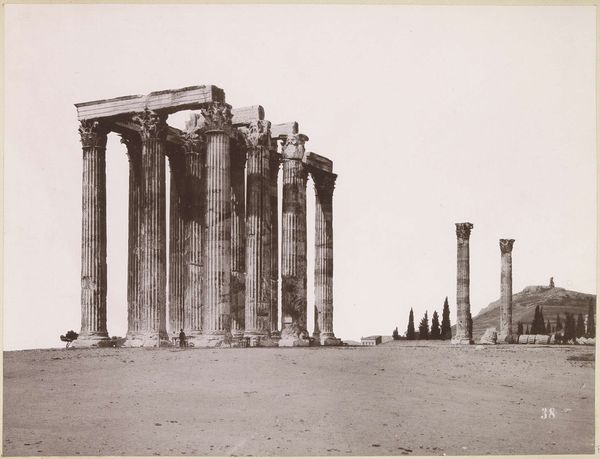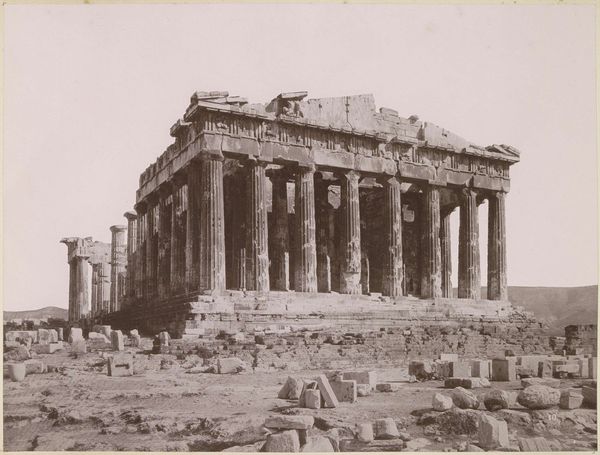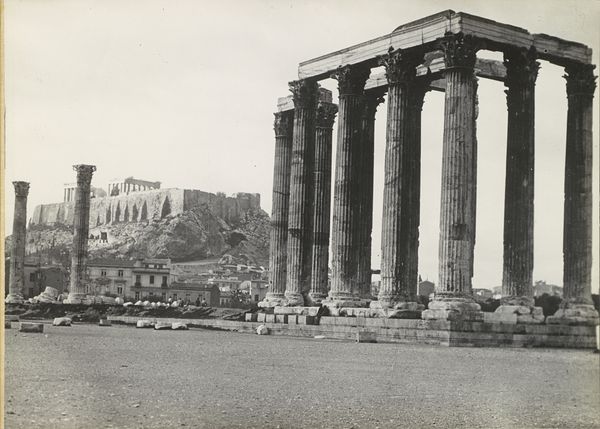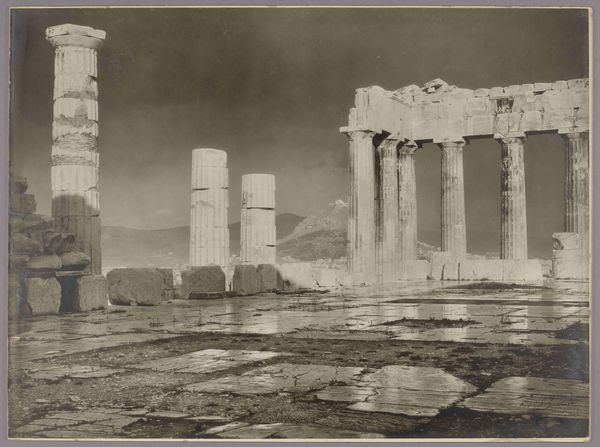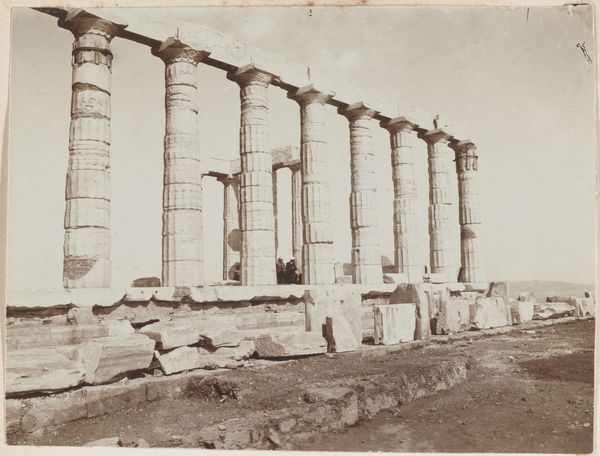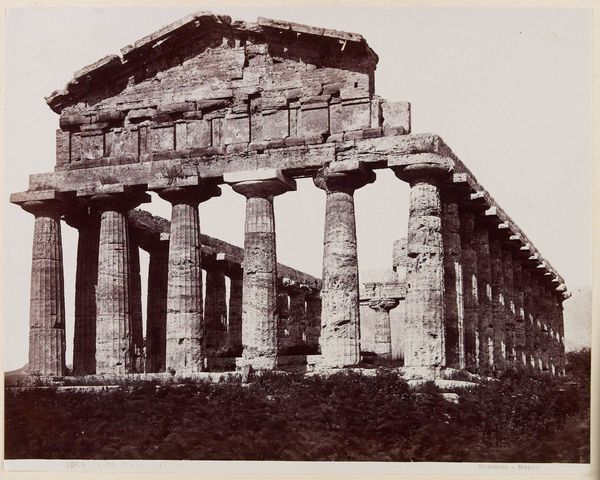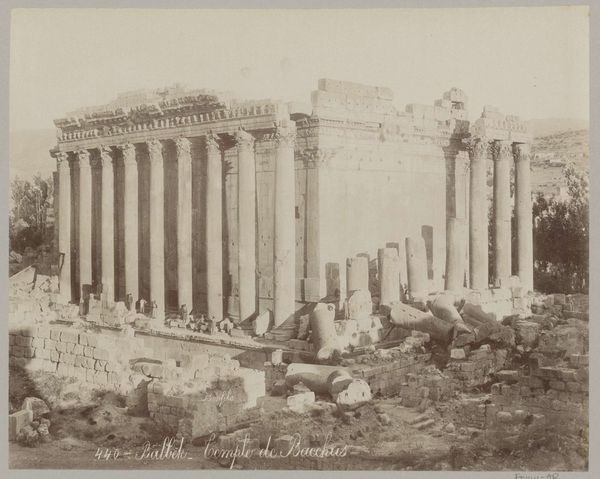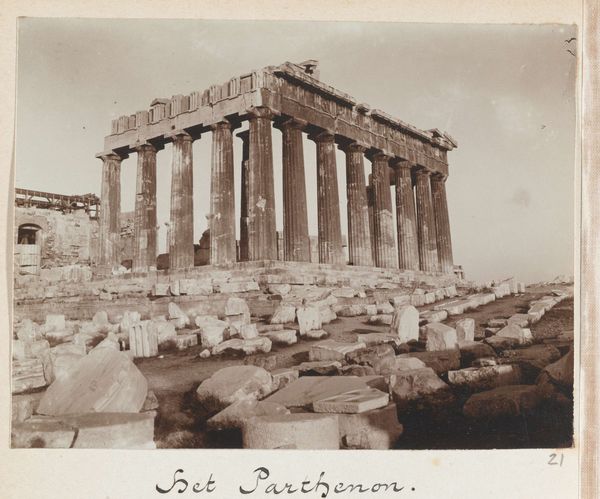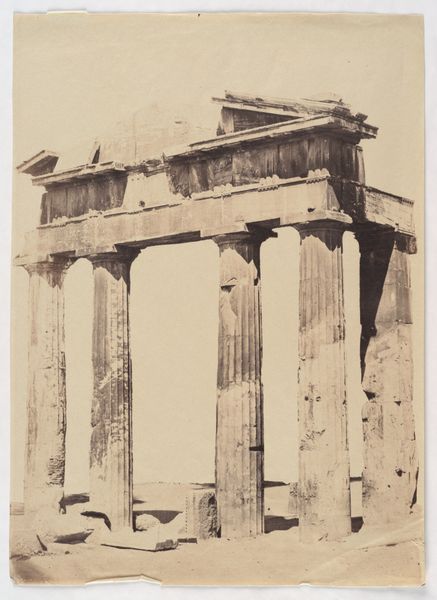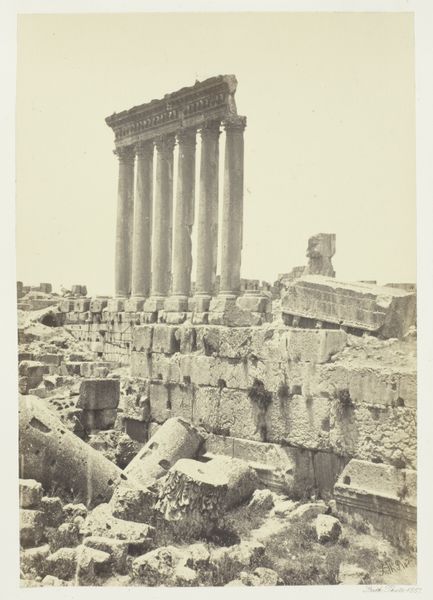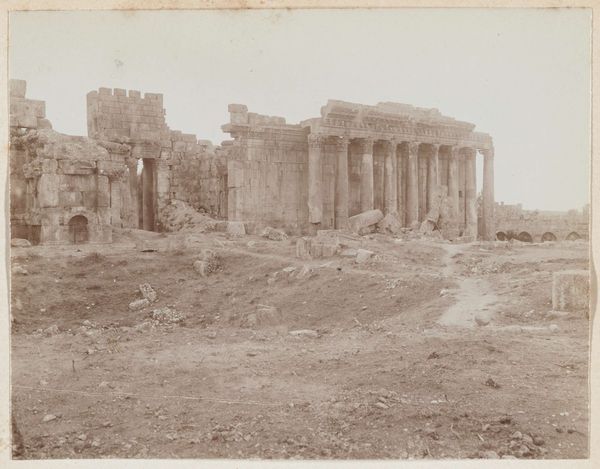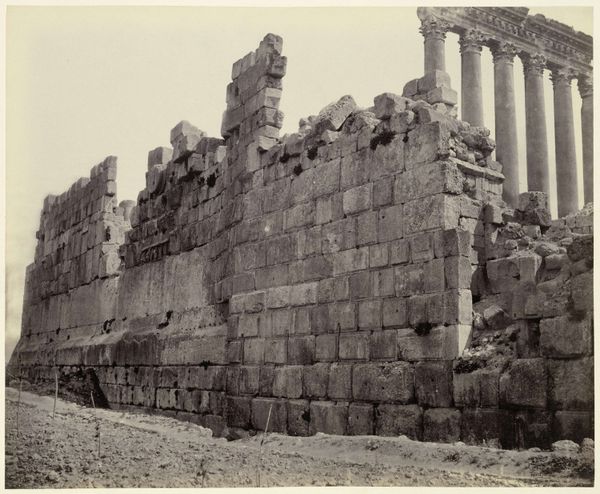
photography
#
landscape
#
photography
#
ancient-mediterranean
#
cityscape
Dimensions: height 81 mm, width 110 mm
Copyright: Rijks Museum: Open Domain
Editor: This is a photograph from 1898 by Johannes Lodewijk Heldring, titled "Erechtheion on the Acropolis of Athens." It captures a ruined cityscape. It's a very still and somber photograph. What jumps out to you when you look at it? Curator: Immediately, the composition strikes me. Notice the distribution of light and shadow. The artist expertly uses a monochromatic palette to emphasize the structural forms, delineating a clear contrast between the surviving architectural elements and the surrounding space. Editor: I see what you mean. The pillars really stand out, don’t they? How does the photographer draw our eye to them? Curator: Indeed. Heldring masterfully uses linear perspective. The placement and spacing of the columns within the frame creates a visual rhythm that leads the viewer's eye deeper into the composition. And observe the interplay between the solid, vertical forms of the columns and the more fragmented, horizontal lines of the ruins in the foreground. This dichotomy generates a compelling visual tension. Editor: It's almost like a before and after, the ideal and the reality. The forms make sense on their own, but also juxtapose. Curator: Precisely. It’s this contrast that invites contemplation of themes such as permanence versus impermanence, order versus decay. How do you find the sepia tones contribute? Editor: The sepia lends an antiquated quality. It feels both historical and somehow… immediate? I learned so much just now from close looking and formal analysis. Curator: The strength of photography is in its materiality: through monochrome and tonality Heldring renders light and space in an attempt to freeze both subject and emotion in a fleeting moment. It is a study in shape, texture, and, ultimately, time.
Comments
No comments
Be the first to comment and join the conversation on the ultimate creative platform.
